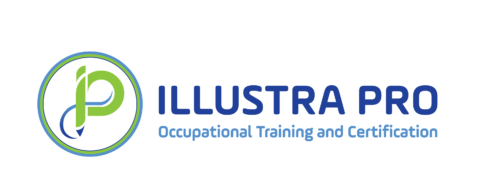When it comes to heat illness, employers have a critical duty, as highlighted by the Occupational Safety and Health Administration (OSHA). Extreme heat leads to numerous fatalities and thousands of heat-related illnesses among workers each year.
Between 1992 and 2017, the U.S. Bureau of Labor Statistics (BLS) recorded 815 heat-related worker deaths and 70,000 serious injuries. In this article, we’ll look at what heat illness is and heat illness prevention programs that can be implemented by employers. Let’s begin!
What Is Heat Illness?
The human body cools itself primarily through sweating. However, in hot and humid conditions, sweating might not be enough and this can lead to dangerous increases in body temperature, ultimately causing heat-related illnesses. OSHA/CAL defines “Heat Illness” as a serious medical condition resulting from the body’s inability to cope with a particular heat load, and includes heat cramps, heat exhaustion, heat syncope, and heat stroke (see T8 CCR Section 3395). The National Institute for Occupational Safety and Health (NIOSH) identifies several types of heat disorders:
• Prickly Heat Rash:
Caused by sweating in hot, humid conditions.
• Heat Cramps:
Painful, involuntary muscle spasms resulting from large salt loss due to strenuous exercise and profuse sweating.
• Heat Syncope:
Sudden collapse from fainting or dizziness often associated with long durations of standing and sudden movement due to dehydration combined with lack of acclimatization.
• Heat Exhaustion:
A more serious form of heat illness that can occur after prolonged exposure to high temperatures and the loss of body fluids through heavy sweating. The elderly, people with hypertension and those who work in hot environments are most at risk of heat stroke.
• Heat Stroke:
A condition where the body temperature soars and which is often fatal in extreme cases, as normal thermoregulatory mechanisms shut down. Rapid emergency care is essential to prevent death or permanent paralysis.
12 Elements Of A Heat Illness Prevention Program
It is important to ensure the protection of workers’ safety in high temperatures; this is why OSHA has come up with a 12-point plan that will tell you how to prevent heat illness. The 12 essential elements of an effective heat illness prevention program include:
- Heat Plan Development: Create a well-detailed OSHA heat-related illness prevention plan which includes weather monitoring, acclimatization, work/rest schedules, a buddy system, and emergency protocols and communicate it effectively to all workers.
- Nominate a Heat Safety Program Manager: Appoint individuals with knowledge of managing this program adequately for continuous oversight.
- Provide Training on Heat Illness: Conduct routine heat illness prevention training that provides clear instructions on understanding the risks, symptoms, and prevention methods of heat illness involving response procedures.
- Acclimate Workers: Introduce new and returning employees gradually into hot conditions using a 14-day period over 20% Rule. Gradually increasing workers’ exposure to hot conditions helps them acclimate safely, reducing the likelihood of heat stress. New employees or those returning from an absence should undergo a period of acclimatization.
- Adapt Work Schedules to Minimize Heat Exposure: Suspend non-essential tasks, change heavy ones, rotate staff or discontinue the work as needed in order to reduce heat exposure.
- Allow Frequent Rest Breaks: Ensure rest breaks are long enough for recovery based on temperature, humidity, and activity level.
- Identify Heat Hazards: Determine hazards associated with high temperatures, humidity, sun exposure, indoor sources of heat utilized at the workplace, requirements pertaining to clothing, or personal factors influencing your health.
- Check the Temperature Before Work: Use various tools and applications that monitor outdoor temperature as well as indoor heat indices so as to take necessary action.
- Watch out for Heat Illness Symptoms: Establish a way to spot any symptom of heat illness early by means of a buddy system or even medical examinations.
- Give Rest Breaks To Employees and Ensure Hydration: Ensure that there are places where employees can rest in a shade or cool environment. Ensuring continuous access to fluids is also crucial. Encouraging regular hydration breaks helps maintain the body’s fluid balance, which is essential for preventing heat stress.
- Dress for the Heat: Prevent heat illness by persuading workers to dress in light weight clothes so that they can breathe comfortably. Supplying light-colored, loose-fitting clothing helps reduce heat absorption and facilitates better airflow around the body, enhancing the cooling effect of sweat evaporation.
- Be Prepared for an Emergency: Develop and communicate an emergency plan detailing steps for heat illness, emergency contacts, response times, and first-aid measures. This plan in place will ensure immediate action should an emergency arise.
Heat Stress Signs
Employers should remember that when it comes to heat stress, precautionary measures ought to be taken, especially if the following symptoms start appearing among their employees. A few common examples of such symptoms include:
- Heavy sweating
- Pallor
- Muscle cramps
- Fatigue
- Dizziness
- Rapid heartbeat
- Headache
- Nausea
- Confusion
- Fainting
Workers should be aware of these symptoms and risk factors such as high temperatures, humidity, direct sunlight, physical exertion, and certain medications. Early intervention is key to heat illness prevention that may result in more severe illnesses.
Heat Index Risk Levels and Protective Measures
The National Weather Service (NWS) developed the Heat Index in order to assess risk levels based on temperature and humidity. Employers are advised to take protective actions depending on the risk categories mentioned below:
- Lower (Caution): Basic heat safety planning.
- Moderate: Implement additional precautions and increase awareness.
- High: Heighten protective measures to safeguard workers.
- Very High to Extreme: Adopt aggressive protective strategies to prevent heat-related illnesses.
Factors Elevating Heat Stress Risk
The risk of heat stress among workers can be influenced by a variety of factors, both environmental and personal. Common examples of such factors may include:
- High temperature and humidity
- Direct sun exposure without shade
- Indoor heat sources such as ovens or furnaces
- Limited air movement
- Low fluid intake
- Physical exertion
- Heavy protective clothing
- Poor physical condition or existing health problems
- Medications affecting heat tolerance
- Pregnancy
- Lack of recent heat exposure
- Previous heat-related illness
- Advanced age (65+)
Conclusion
Employers are responsible both legally and morally in the prevention of heat illness at work for their workers. By establishing programs for preventing heat-related illnesses, offering education promoting hydration, and being vigilant about recognizing signs of heat stress, employers can greatly lower the chances of heat-related accidents and deaths.
Taking steps and consistently monitoring the situation are crucial for creating a healthy workplace environment in hot weather conditions. Visit Contact Illustra Pro to learn more about heat illness prevention to ensure worker well-being and minimize heat-related illnesses.

